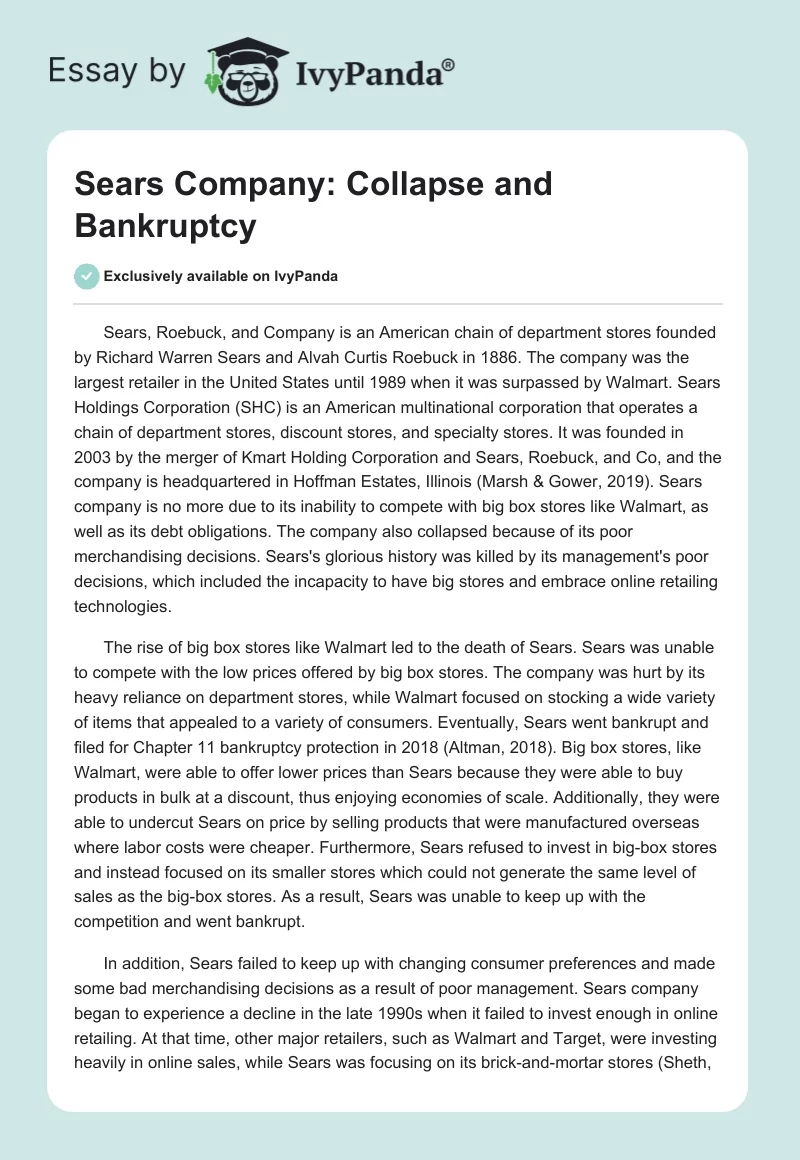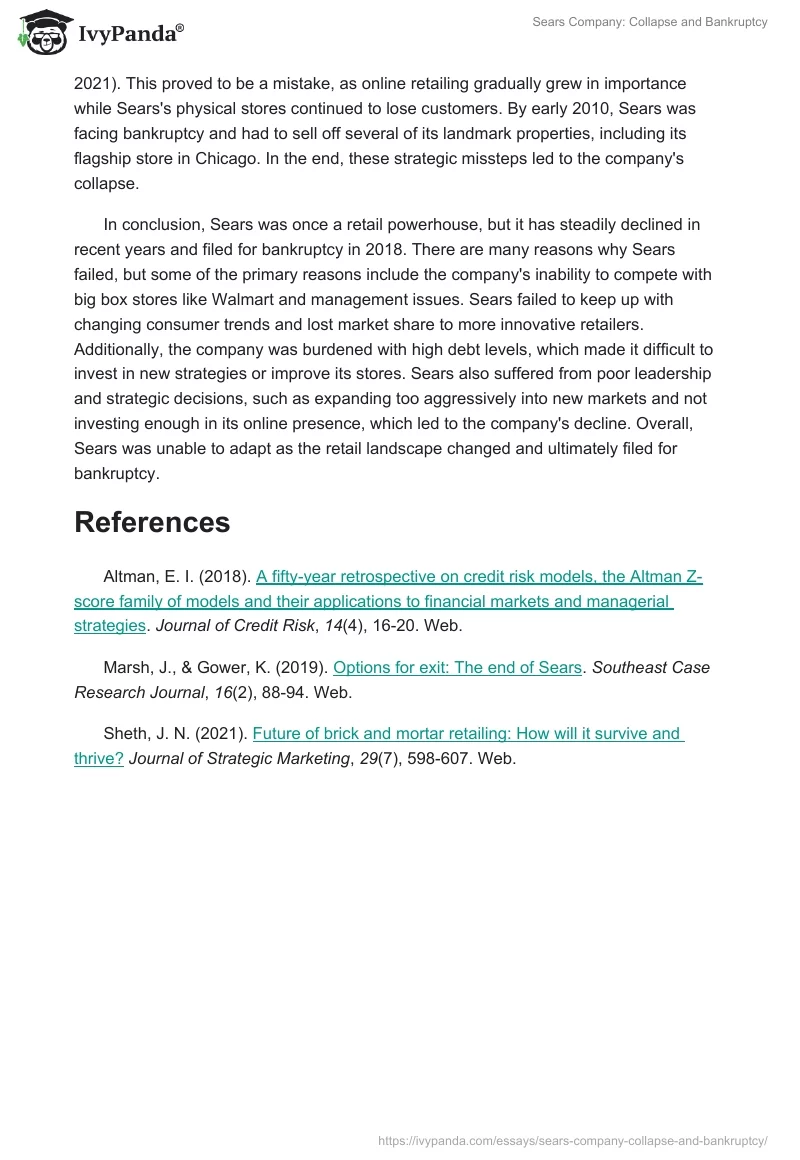Sears, Roebuck, and Company is an American chain of department stores founded by Richard Warren Sears and Alvah Curtis Roebuck in 1886. The company was the largest retailer in the United States until 1989 when it was surpassed by Walmart. Sears Holdings Corporation (SHC) is an American multinational corporation that operates a chain of department stores, discount stores, and specialty stores. It was founded in 2003 by the merger of Kmart Holding Corporation and Sears, Roebuck, and Co, and the company is headquartered in Hoffman Estates, Illinois (Marsh & Gower, 2019). Sears company is no more due to its inability to compete with big box stores like Walmart, as well as its debt obligations. The company also collapsed because of its poor merchandising decisions. Sears’s glorious history was killed by its management’s poor decisions, which included the incapacity to have big stores and embrace online retailing technologies.
The rise of big box stores like Walmart led to the death of Sears. Sears was unable to compete with the low prices offered by big box stores. The company was hurt by its heavy reliance on department stores, while Walmart focused on stocking a wide variety of items that appealed to a variety of consumers. Eventually, Sears went bankrupt and filed for Chapter 11 bankruptcy protection in 2018 (Altman, 2018). Big box stores, like Walmart, were able to offer lower prices than Sears because they were able to buy products in bulk at a discount, thus enjoying economies of scale. Additionally, they were able to undercut Sears on price by selling products that were manufactured overseas where labor costs were cheaper. Furthermore, Sears refused to invest in big-box stores and instead focused on its smaller stores which could not generate the same level of sales as the big-box stores. As a result, Sears was unable to keep up with the competition and went bankrupt.
In addition, Sears failed to keep up with changing consumer preferences and made some bad merchandising decisions as a result of poor management. Sears company began to experience a decline in the late 1990s when it failed to invest enough in online retailing. At that time, other major retailers, such as Walmart and Target, were investing heavily in online sales, while Sears was focusing on its brick-and-mortar stores (Sheth, 2021). This proved to be a mistake, as online retailing gradually grew in importance while Sears’s physical stores continued to lose customers. By early 2010, Sears was facing bankruptcy and had to sell off several of its landmark properties, including its flagship store in Chicago. In the end, these strategic missteps led to the company’s collapse.
In conclusion, Sears was once a retail powerhouse, but it has steadily declined in recent years and filed for bankruptcy in 2018. There are many reasons why Sears failed, but some of the primary reasons include the company’s inability to compete with big box stores like Walmart and management issues. Sears failed to keep up with changing consumer trends and lost market share to more innovative retailers. Additionally, the company was burdened with high debt levels, which made it difficult to invest in new strategies or improve its stores. Sears also suffered from poor leadership and strategic decisions, such as expanding too aggressively into new markets and not investing enough in its online presence, which led to the company’s decline. Overall, Sears was unable to adapt as the retail landscape changed and ultimately filed for bankruptcy.
References
Altman, E. I. (2018). A fifty-year retrospective on credit risk models, the Altman Z-score family of models and their applications to financial markets and managerial strategies. Journal of Credit Risk, 14(4), 16-20. Web.
Marsh, J., & Gower, K. (2019). Options for exit: The end of Sears. Southeast Case Research Journal, 16(2), 88-94. Web.
Sheth, J. N. (2021). Future of brick and mortar retailing: How will it survive and thrive?Journal of Strategic Marketing, 29(7), 598-607. Web.


